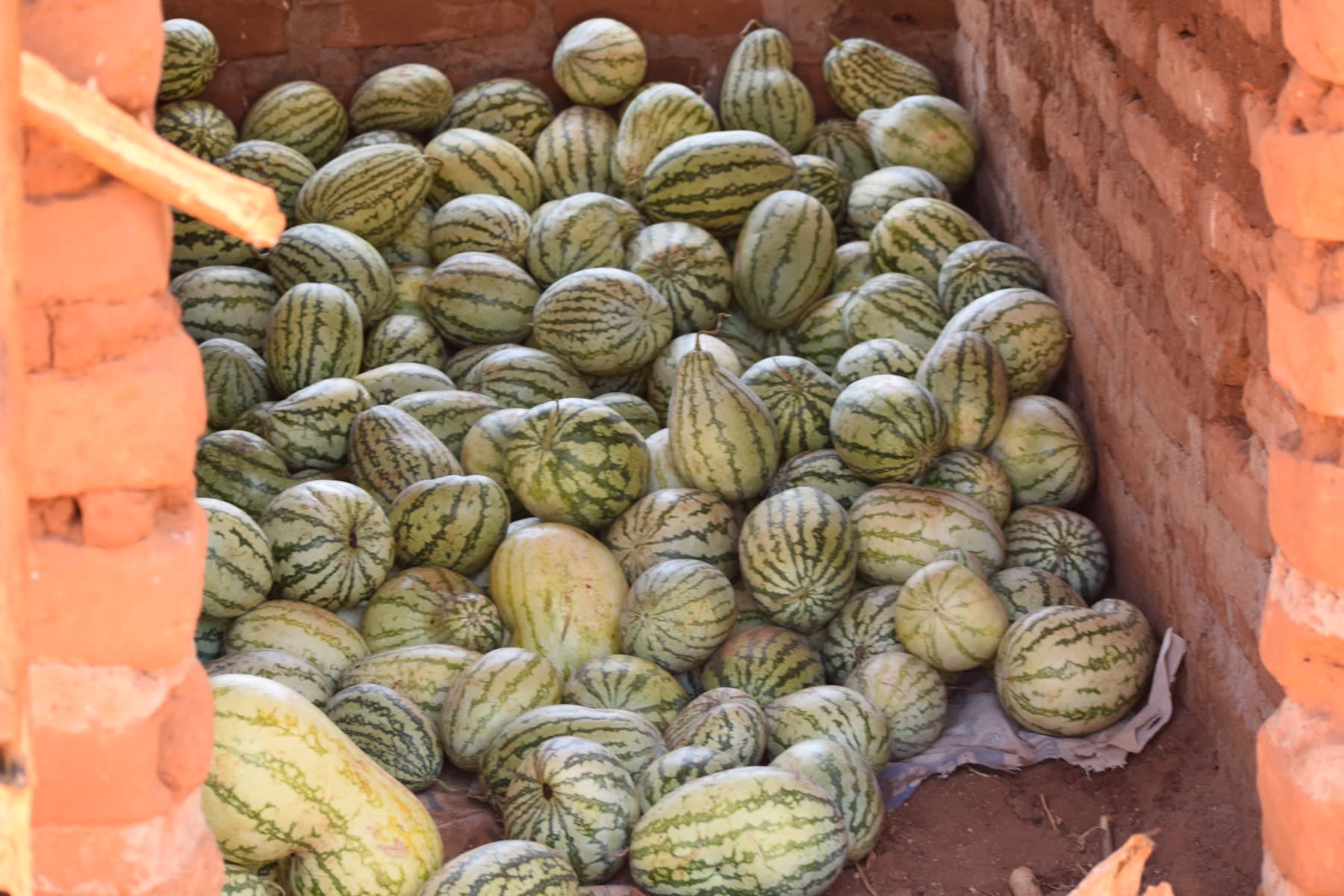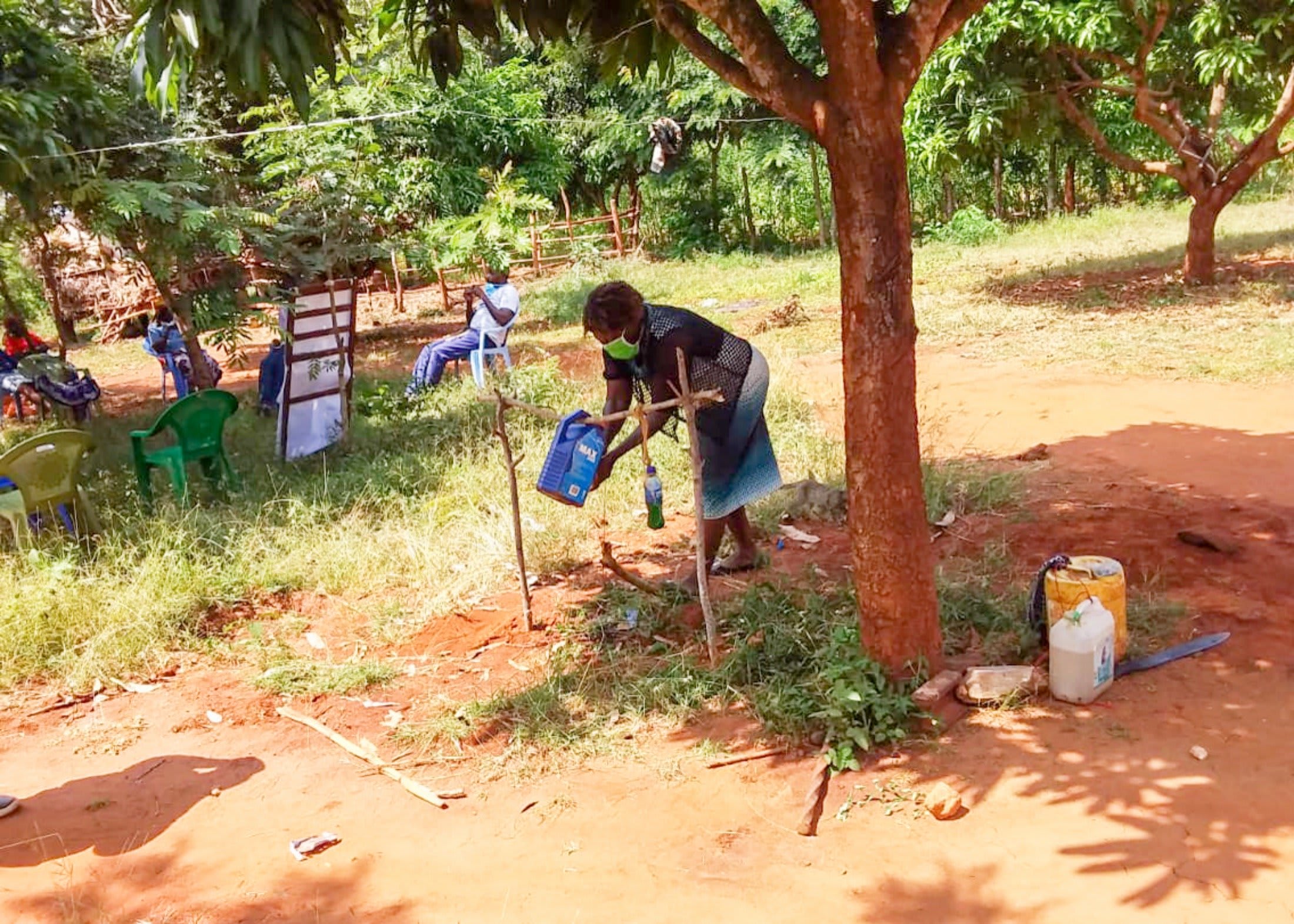People in Ngitini Community have to walk for a long distance to collect water and traverse steep and rocky terrain just to reach the source. It is exhausting and dangerous to carry heavy cans of water along that path.
All that effort is to fetch water from a scoop hole that is dirty, untreated and unprotected. It poses a high risk of contracting diseases waterborne such as typhoid, cholera, or diarrhea.
"The water we get from these scoop holes is very little, especially during the dry seasons. It is dirty and we have to spend a lot of time and money to make it safe for consumption," Mr. Daniel Kyalo, a local farmer, said.
It is very dangerous to consume such water because the water is also used for livestock and other domestic animals. These scoop holes dry up when there are no rains. Some people will dig deeper holes to try and find water, but most will look to other sources for water.
As a result, people turn to the nearby river for collecting water - a source that is also open to contamination and poses a risk to young people who can fall in. The water used for drinking is often untreated in this community, too.
"It is very expensive to treat since the water is salty; washing clothes is usually very exhausting because the soap does not lather," Mr. Kyalo said.
Kinyenyoni Self-Help Group heard about our work to build dams and new wells from other communities and decided to contact us through a field officer. We learned about their water problems and that fewer than half of households have latrines.
The latrines we observed are rarely cleaned due to the water scarcity. As a result, the latrines have a foul smell and are in generally poor shape. Handwashing is also infrequent as a result of the restricted access to water.
"Our children suffer the most because they usually come home from school very thirsty and that's the water they will drink because they have no option," Mr. Kyalo said.
"They fall sick very easily."
Ngitini Village is a serene rural area that is fairly vegetative, as a result of reforestation. It is fairly flat with very few hills around.
Most of the natural vegetation has been cleared to pave way for agriculture. The area boasts of red fertile soil. The households of the area are made of fairly permanent red bricks and are roofed by iron sheets. Most of the families that we visited had a connection to the main electricity grid.
On an average day for the community members, the women wake up at 6am, go to fetch water, and then prepare breakfast for the family as the children prepare for school.
The men go to the farm to get grass for the livestock and also prepare to run errands. Common tasks include: farming, taking farm products to the market, feeding the livestock, and more.
Most of the families earn their income through farming. For instance, one of the families that we visited were farmers and they had harvested a lot of watermelons.

During the day, the woman does the laundry, tidies up the house, washes utensils and prepares lunch as well as supper for the family.
What we plan to do about it:
Our main entry point into Ngitini Community has been the Kinyenyoni Self-Help Group, which is comprised of farming households that are working together to address water and food scarcity in their region. These members will be our hands and feet in both constructing water projects and spreading the message of good hygiene and sanitation to everyone.
Training
We are going to train the self-help group members and their communities on hygiene and sanitation practices. We want to ensure that community members are practicing the day to day habits we are not able to observe during household visits. Food hygiene, water hygiene and treatment, personal hygiene and handwashing will all be a focus during training.
Sand Dam
Building this sand dam in Ngitini will bring water closer to hundreds of other people. After the community picked the spot, our technical team went in and proved the viability by finding a good foundation of bedrock. Now, our engineers are busy drawing up the blueprints. We estimate the dam will be 63.8 meters long and 4.3 meters high.
We are unified with this community to address the water shortage. As more sand dams are built, the environment will continue to transform. As the sand dams mature and build up more sand, the water tables will rise. Along with these sand dams, hand-dug wells (check out the hand-dug well being installed next to this dam) will be installed to give locals a good, safe way to access that water.
With these projects, clean water will be brought closer to people like Mr. Kyalo.

 Sand Dam
Sand Dam
 Rehabilitation Project
Rehabilitation Project







































